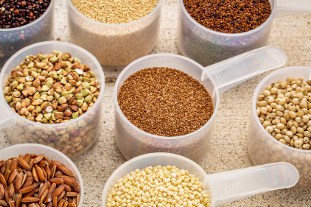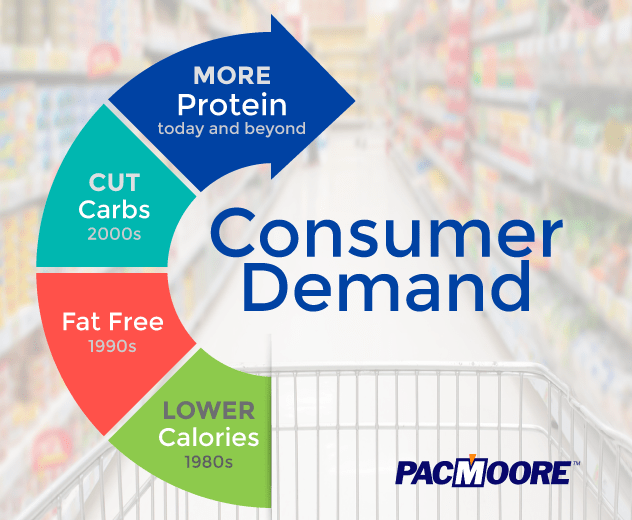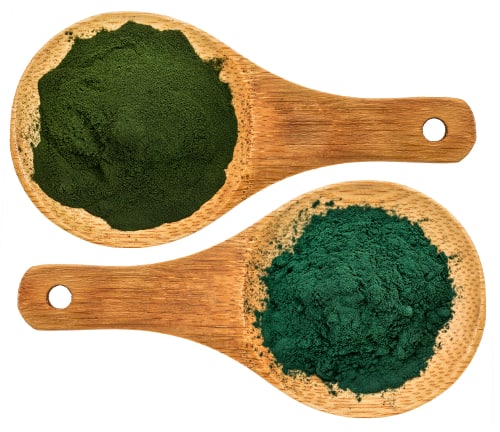PacMoore is well aware that our world population is expected to increase from 7 Billion people to 9 Billion people by 2050. This projection combined with other factors leads most to be certain that there is a world food crisis on the horizon. Not only will an increased supply of food be needed but foods with higher nutritional profiles will be much more important. Protein enriched foods meet this definition.
Recently PacMoore attended the Protein Trends & Technologies Seminar from Global Food Forums to immerse ourselves more deeply in the nuances of this category of products. There are more than 1,000 different types of proteins. Proteins can be derived from meats, dairy, plants, algae, and even insects. Not surprisingly, all proteins are not alike. For example, there can be wide differences in nutritional quality and functionality. Areas of functionality include taste, smell, color, and digestion among others. Solubility of the protein appears to be the key to attaining the desired goals for each area of a finished protein product’s functionality.
 Plant-based protein is a category of products that PacMoore has worked in for years as a food contract manufacturer, especially in dry blending and spray drying. Plant proteins are also called protein alternatives, meatless proteins, or vegetarian proteins. Plant-based proteins can be derived from peas, amaranth, beans, quinoa, chia, seeds and nuts, soy or many other sources. PacMoore is excited about growing our engagement in this category not only due to consumer demand but also due to the potential for addressing world food supply and nutrition concerns.
Plant-based protein is a category of products that PacMoore has worked in for years as a food contract manufacturer, especially in dry blending and spray drying. Plant proteins are also called protein alternatives, meatless proteins, or vegetarian proteins. Plant-based proteins can be derived from peas, amaranth, beans, quinoa, chia, seeds and nuts, soy or many other sources. PacMoore is excited about growing our engagement in this category not only due to consumer demand but also due to the potential for addressing world food supply and nutrition concerns.
The People Demand Protein
 From a consumer standpoint, protein demand is not new but it has not always been in the spotlight. During the 1980’s the focus was on calories, in the 1990’s focus shifted to fat free and fiber enriched products, in the 2000’s it was all about carbs and whole grains, and more recently the focus has been on protein. This won’t change anytime soon and there are many reasons why. Energy (both physical and mental) is a primary consumer need that transcends age and gender. People are working out more so sports related nutrition and recovery products continue to grow. Weight control products are growing as obesity concerns increase. Joint problems are a huge frustration for seniors and this is a large market since boomers are now hitting 70. Joint problems can be mitigated by protein products that create stronger muscles. Moms increasingly state that they want to their children to have more protein which indicates that protein-fortified kids’ products are likely to grow. Even sleep aid products fortified with protein may grow as there is evidence that protein replenishes muscle while sleeping. Pet owners are adding to the drumbeat as they increasingly desire protein-fortified pet foods.
From a consumer standpoint, protein demand is not new but it has not always been in the spotlight. During the 1980’s the focus was on calories, in the 1990’s focus shifted to fat free and fiber enriched products, in the 2000’s it was all about carbs and whole grains, and more recently the focus has been on protein. This won’t change anytime soon and there are many reasons why. Energy (both physical and mental) is a primary consumer need that transcends age and gender. People are working out more so sports related nutrition and recovery products continue to grow. Weight control products are growing as obesity concerns increase. Joint problems are a huge frustration for seniors and this is a large market since boomers are now hitting 70. Joint problems can be mitigated by protein products that create stronger muscles. Moms increasingly state that they want to their children to have more protein which indicates that protein-fortified kids’ products are likely to grow. Even sleep aid products fortified with protein may grow as there is evidence that protein replenishes muscle while sleeping. Pet owners are adding to the drumbeat as they increasingly desire protein-fortified pet foods.
A Shift from Meat to Plant-Based Proteins
Because meat is a solid source of protein, certain types of meat continue to grow in demand. Although there is an ongoing debate about the health benefits of meat protein based diets versus plant protein diets, there are clear sustainability benefits to shifting away from meat as the main protein source of the human diet. For example, it takes 6 grams of plant-based proteins to yield just one 1 gram of meat protein. Additionally, the production of meat protein requires much more land, water and fossil fuels compared to an equal amount of plant protein. With the increase of available information, consumers are recognizing these facts and are looking to plant proteins more and more – vegetarian and flexitarian diets are on the rise. Flexitarian diets are plant-based while occasionally allowing the inclusion of favorite meat products. To date, plant-based proteins still have relatively low penetration which means there is a huge opportunity for more growth. Additionally, plant-based protein products are becoming increasingly affordable for the average consumer. Lastly, plant-based protein product flavor profiles continue to improve as food technologists work to improve them.
The Future of Alternative Proteins
Blending of different protein varieties in different mixes or ratios into a matrix is a somewhat new discipline that demands rigor but provides an opportunity for more protein options and benefits, especially in regards to nutritional profiles and functionality. Blending proteins also provides an opportunity to minimize the impact of supply disruptions or cost fluctuations because the blend is not tied to a single protein. Protein blends that utilize plants alone actually create new sources of proteins to compete with animal-based proteins for this growing market demand.
 Lastly, don’t count out protein sources that might not sound appealing on the surface but should have major impacts in years to come. Algae can be grown in a variety of ways from hydroponics to seaweed farms in the ocean – these are valuable growing options versus requiring shrinking arable land. And once a safe, consistent supply of insects is available, the only barrier to overcome for this protein source alternative will be consumer perception. This has already been overcome in many Asian, South American, and African countries.
Lastly, don’t count out protein sources that might not sound appealing on the surface but should have major impacts in years to come. Algae can be grown in a variety of ways from hydroponics to seaweed farms in the ocean – these are valuable growing options versus requiring shrinking arable land. And once a safe, consistent supply of insects is available, the only barrier to overcome for this protein source alternative will be consumer perception. This has already been overcome in many Asian, South American, and African countries.
Call Josh Warren at PacMoore toll free at 866-610-2666 or directly at 317-440-4497 to discuss your protein needs. Whether it be processing (dry blending, spray drying, or extrusion) or product development using our R&D personnel and pilot equipment, we would love to work with you to assist your efforts to capitalize on the growing protein demand and worldwide need.
